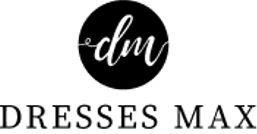
The Psychology of Color in Streetwear
Share
Streetwear is a style of casual clothing that originated from skateboarding and hip-hop culture in the 1980s and 1990s. It is characterized by comfortable and relaxed clothing such as hoodies, T-shirts, sneakers, and jeans, and often features bold graphics, logos, and patterns. Streetwear has evolved into a global phenomenon, with a strong influence on fashion and culture. Color plays a significant role in streetwear fashion. It can convey the personality of the brand or the wearer, evoke emotions, and create a sense of identity. Streetwear brands often use colors to create a distinctive aesthetic that sets them apart from their competitors. The right color combination can help to establish a brand's identity and attract a loyal following. As streetwear continues to grow and evolve, color will remain a vital element in its design and marketing.
Table of Contents:
The Psychology of Color
The psychology of color is the study of how different colors can affect human emotions, behavior, and perception. Colors can elicit both positive and negative emotions, and they can influence people's decisions, moods, and attitudes. For example, red is associated with excitement, passion, and danger, while blue is often seen as calming, trustworthy, and professional. Understanding the psychology of color is essential in designing effective branding and marketing strategies, as colors can help create a specific mood or convey a particular message. Color can have a significant impact on emotions and behavior. Research has shown that certain colors can affect physiological responses, such as heart rate and blood pressure, as well as psychological responses, such as mood and attitude. For instance, yellow has been found to increase feelings of happiness and optimism, while green is associated with a sense of calm and relaxation. On the other hand, black can evoke feelings of power, sophistication, and mystery, but it can also be associated with negativity or mourning. Cultural and personal associations with color can also influence people's reactions to colors. Different cultures have different meanings and associations with colors, and personal experiences and preferences can also play a role in how people respond to certain colors. For example, in Western cultures, white is often associated with purity and innocence, while in some Asian cultures, it is associated with mourning. Personal associations with color can be influenced by factors such as childhood experiences, cultural background, and individual personality traits.

Color in Streetwear
The psychology of color refers to how different colors can affect human emotions, behaviors, and moods. Colors have a powerful impact on our brains and can elicit both conscious and subconscious responses. Understanding the psychology of color is essential in creating effective marketing and branding strategies, as colors can influence how consumers perceive a brand and ultimately affect their purchasing decisions. The impact of color on emotions and behavior is complex and varies depending on individual experiences and cultural backgrounds. For example, the color red is often associated with passion and excitement in Western cultures, while in Eastern cultures, it is associated with luck and prosperity. Blue is often associated with calmness and trustworthiness, while green is associated with nature and health. Yellow is associated with happiness and warmth, while black is associated with elegance and sophistication. Cultural and personal associations with color can also influence how individuals respond to different colors. For example, a person who grew up in a culture that values the color yellow may feel more drawn to products that are predominantly yellow. Similarly, a person who associates the color red with negative experiences may feel repelled by products that use a lot of red. These personal and cultural associations can impact how individuals respond to different colors and ultimately influence their purchasing decisions. Moreover, Color psychology has been extensively studied by psychologists and marketers to understand how color can influence human behavior. For instance, studies have shown that warm colors like red and yellow can increase appetite and promote impulse buying, while cool colors like blue and green can create a sense of calmness and relaxation. Furthermore, bright and vibrant colors are often used to capture attention, while muted and pastel colors are used to create a sense of subtlety and sophistication. Personal preferences and experiences can also play a significant role in how people perceive and respond to color. For instance, a person may have a strong emotional connection to a particular color because it reminds them of a pleasant experience or a cherished memory. Similarly, individuals with synesthesia may perceive colors in a different way, as their brain associates colors with different senses like taste or sound. Thus, the psychology of color is a complex and multifaceted field that requires a nuanced understanding of how different factors like culture, personal experience, and biology can influence human responses to color.

Marketing and Branding
Color plays a crucial role in shaping consumer behavior in streetwear fashion. The colors used in branding and marketing can impact how consumers perceive a brand, influence their emotions and mood, and ultimately affect their purchasing decisions. Bold and vibrant colors are often used in streetwear fashion to create a sense of energy and excitement, which appeals to younger consumers. Neutral colors such as black, white, and gray, can create a sense of sophistication and timelessness that resonates with a broader range of consumers. The use of color in branding streetwear companies is essential in creating a recognizable visual identity. Brands can use color to establish a unique aesthetic that sets them apart from their competitors. By utilizing specific color schemes, brands can establish a strong visual identity that is familiar to consumers. When done effectively, color can help create a sense of brand loyalty and help drive sales. Many successful streetwear brands have utilized color as a critical element in their branding and marketing strategies. The use of bright and bold colors in graphic designs and patterns has become a popular trend in the streetwear subculture. Streetwear brands can use color to create a unique aesthetic that resonates with consumers and creates a strong visual identity. Overall, the effective use of color in streetwear fashion is crucial in creating a memorable and recognizable brand that appeals to consumers.

Future Trends
Predicting upcoming color trends in streetwear is always a challenge as they are constantly evolving. However, some emerging trends suggest that streetwear fashion is moving towards a more environmentally friendly and sustainable approach. As such, earthy tones such as olive green, burnt orange, and mustard yellow are likely to become popular in streetwear fashion. These colors are not only aesthetically pleasing but also represent the natural world and promote a sense of environmental consciousness. Technology is also having a significant impact on color in streetwear fashion. Advancements in digital printing techniques have made it easier for designers to create intricate and detailed graphic designs that incorporate a wide range of colors. This has allowed for a more diverse color palette in streetwear fashion, enabling designers to experiment with unique color combinations and patterns. Sustainability is also becoming an increasingly important consideration in streetwear fashion. Consumers are becoming more aware of the environmental impact of the fashion industry and are seeking out brands that prioritize sustainability. As a result, streetwear brands are incorporating more sustainable materials and processes into their products, which is influencing their color choices. Natural dyes and eco-friendly pigments are becoming more popular in streetwear fashion, as they are seen as a more sustainable alternative to synthetic dyes and pigments. Finally, inclusivity and diversity are also becoming important factors in streetwear fashion. Brands are embracing a wider range of skin tones and cultural backgrounds, which is influencing their color choices. Colors that represent diverse cultures and communities are becoming more popular, and streetwear fashion is moving towards a more inclusive and representative approach. This means that streetwear fashion is likely to incorporate more vibrant and bold colors that celebrate diversity and promote a sense of inclusivity.

Conclusion
In conclusion, the use of color in streetwear fashion plays a crucial role in branding, marketing, and consumer behavior. Color can influence emotions, perceptions, and purchasing decisions, making it an essential element in creating a memorable and recognizable brand. Streetwear brands that understand the psychology of color and incorporate it into their designs and marketing strategies can create a powerful and effective visual identity that resonates with their target audience. As streetwear fashion continues to evolve, the importance of color is likely to remain a critical factor in shaping trends and consumer behavior. Understanding the impact of color on emotions, culture, and behavior can help streetwear brands create a unique and distinctive aesthetic that sets them apart from their competitors. By embracing emerging trends in color and staying attuned to the changing needs and values of their target audience, streetwear brands can continue to thrive in a competitive and dynamic marketplace. And if you are looking to buy some good quality clothing for streetwear that you can style in different ways to elevate your drip game, head over to Dresses Max now and shop the most stylish and versatile pieces of clothing available today. Visit Dresses Max now!
















